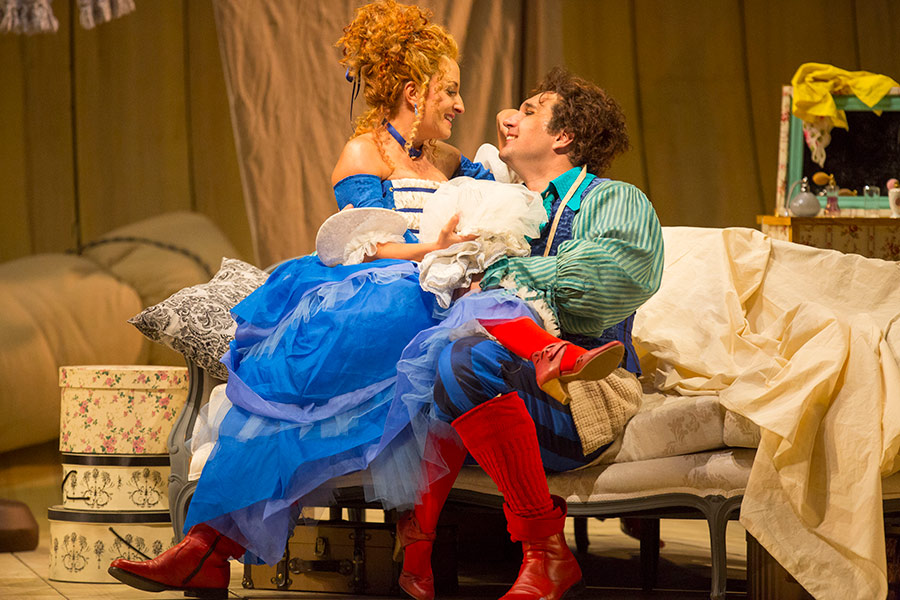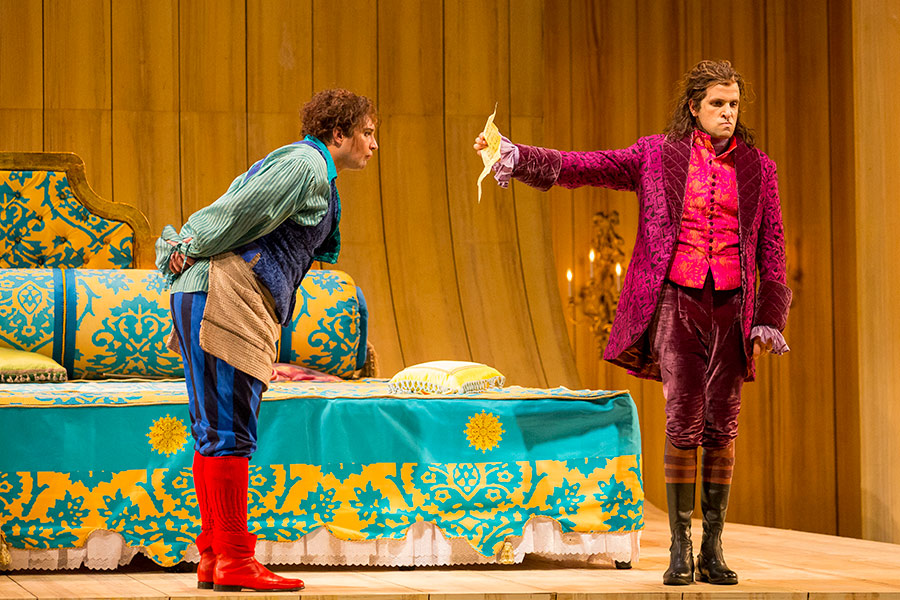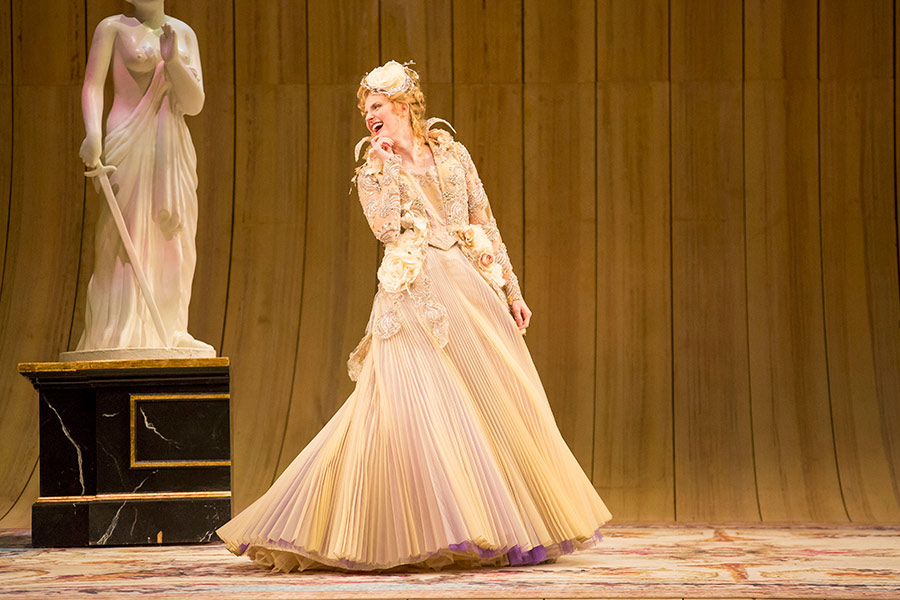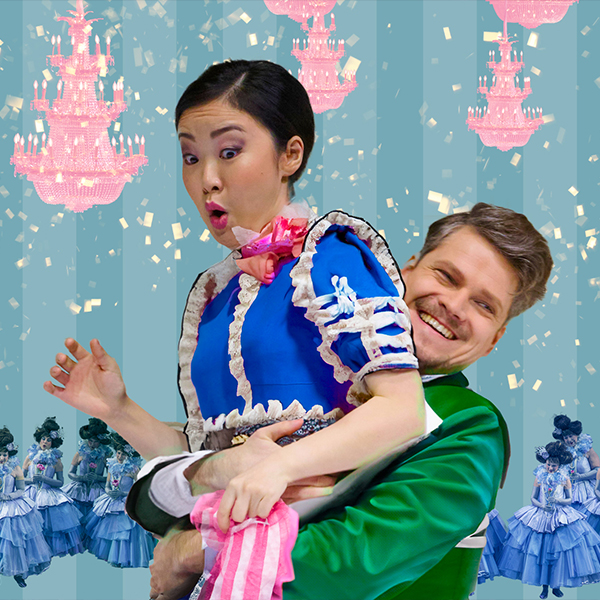October 27, 2024
Finding friends in Figaro
Can you think of any operatic characters you'd want as friends? Imagine the stress of hanging out with, say, the Queen of the Night, Azucena, or Boris Godunov! The dramatis personae of The Marriage of Figaro, however, are an exception: You could enjoy yourself with nearly everyone in this opera, whether helping Cherubino compose his first love letter; escorting Countess Almaviva to the theater; planning a dinner party with the resourceful Susanna; or spending a rowdy night on the town with the ever-energetic Figaro. The average macho guy might even relish an evening at the fights with Count Almaviva.
The humanity of Figaro, as revealed by the music and libretto, has sustained this opera for more than two centuries. We understand it better now, having been helped by the past three decades of Figaro's performance history. Yes, productions have placed it in the 1920s and in today's Trump Tower, but more to the point is that our ideas about characterization have expanded. The key figures of Figaro have moved away from cliché, thus their three-dimensionality — and consequently, their appeal to an audience — has emerged even more strongly.

Christiane Karg as Susanna and Adam Plachetka as Figaro in Lyric's 2015/16 production of The Marriage of Figaro.
Susanna, for example, is not a chirping soubrette doll but a modern young woman, with utterly believable emotions. She's the opera's linchpin, with her intelligence and quick-wittedness propelling much of the action. The latter she uses vividly in Act One when confronting her rival, Marcellina: In their duet, listen to Susanna repeatedly throw the phrase "L'età!"/"Your age!" in Marcellina's face! Yes, it's a barb, but a good-humored one. Humor helps Susanna cope with life and is an essential element of her personality; on the other hand, she's deadly serious when she believes Figaro has betrayed her with Marcellina. The true test for any Susanna, however, is her delivery of just one word: "Signore" ("My lord"), when she steps out of the dressing-room. In three syllables, we hear her absolute confidence in herself; her impudence, even defiance; and her refusal to let the Count's jealousy or the Countess's confusion upset her composure.
It's in her scenes with Figaro that we most appreciate Susanna. What is she to Figaro? Everything! The rascal-ish Figaro of Rossini's Barbiere could survive without her, but Mozart's couldn't. Susanna is his life partner — not just his sexual mate, but also his collaborator on every level, his sounding-board, his ally against adversity. She's as assertive as he is, and maybe even smarter (he's sometimes "a bit slow on the uptake," to quote Sir Bryn Terfel, one of his generation's most prominent Figaros): When he wonders why it's a problem that they've been given what he considers the best room in the castle, she retorts, "Because I'm Susanna and you're a fool!" But she proves her love time and time again; we need only listen to the floating legato of "Deh vieni, non tardar" in Act Four to understand the depth of those feelings; each phrase glows with warmth and sincerity, and all a soprano has to do is to sing naturally and easily; Mozart does the rest for her.
Like Susanna, Figaro also moves through an emotional journey in the course of the opera. The singer isn't portraying Rossini's happy-go-lucky barber; this Figaro's joviality and effervescence are frequently tempered by resentment, apprehension, or sarcasm, sometimes all three at once. His arias are much more straightforward than the Count's, befitting the servant's directness, even bluntness. Beaumarchais's Figaro in the original play was much more perceptibly a revolutionary, but certainly the operatic Figaro's indignation toward his aristocratic master is made perfectly clear in the menacing lines of his first aria, "Se vuol ballare." He is unjustly put-upon by the Count; more than that, he realizes, to his horror, that the only thing that really matters in life — his Susanna — is prey for his employer's lasciviousness.

Adam Plachetka as Figaro and Luca Pisaroni as Count Almaviva in Lyric's 2015/16 production of The Marriage of Figaro.
The Count may be the opera's least sympathetic character, yet a major achievement of the opera is his emergence as a fully rounded human being, not a cardboard villain. Many singers shout their way through the role, as if machismo and a bullying quality tell the tale — but you can't do that and convincingly woo Susanna. We can understand the Count better when we realize that his every line shows a man accustomed to getting his way, but seething with frustration at the obstacles thwarting him. He's like a spoiled child, whose basic mindset of "I'm entitled to/I've got to have/I can't live without" continues into adulthood. What irks him most is that it's his own servant, Figaro, who makes life so difficult: "Must I see a serf of mine made happy while I am left to sigh, and him possess a treasure that I desire in vain? Must I see [Susanna] united by the hand of love to a base slave?"
The Count is a creature of his times, for whom honor remains a serious matter, but at the same time, sexual conquest — representative to the Count of all that is masculine — is too powerful a lure to ignore. He would hardly be out of place in our own day, when innumerable powerful figures (no names need be mentioned) have brought catastrophe on themselves by letting their libidos rule their heads. We can hear him almost hyperventilating with desire in his lines to Susanna in their duet: "Verrai? Non mancherai?" ("You'll come? You won't fail me?").
Dealing with his wife, the Count is a manipulator, as we see perfectly in the finale of Act Two: For example, he addresses the Countess as "Rosina" (as opposed to "Madama"), protesting his love, assuming that this sudden affection can cajole her into forgetting his neglect of her. His constant emoting makes all the more revelatory his kneeling before her in the opera's finale: In the simplest possible melodic line and with only two words — "Contessa, perdono" — he asks the Countess's pardon. The miracle is that we believe in his contrition, thanks to the music.

Amanda Majeski as Countess Almaviva in Lyric's 2015/16 production of The Marriage of Figaro.
The Countess is often, and justifiably, cited as the most affecting of Mozart's female characters. This woman has gotten a raw deal; on the surface, of course, she has everything, but the finery means nothing since her husband has fallen out of love with her. The disillusionment distances her immediately from Rossini's merry spitfire Rosina. Between the Countess and Susanna we witness a certain degree of playfulness (especially when Cherubino is around) and some girlish exchanges, but the two aren't really friends — they maintain the servant-mistress relationship. The Countess has no friends; she was brought to the castle as a bride, quite alone but for the Count's love, and this makes the loneliness implied in her first aria all the more touching.
On the other hand, the Countess does eventually exhibit much more gumption than the quiet suffering of "Porgi amor" would anticipate. She used to be played with an excess of remoteness and "coolth," but today Countesses are livelier, more apt to enjoy the opportunity for flirtation offered by Cherubino. Like nearly everyone else in the opera, the Countess looks to Susanna to solve her problems, but we see her reluctance to do so. It's a revealing moment: In the last phrase of the accompanied recitative before "Dove sono," she laments that her husband's cruel treatment has ultimately forced her to seek a servant's help. In effect, "Dove sono" shows us a woman from the inside: the humiliated, rejected wife; the almost painful longing for her first days of love (no aria communicates nostalgia so memorably); and finally, the strength she takes from her hope that she can alter the Count's feelings. In fact, the aria's ending signals a major change in the Countess: From then on she is take-charge, fully in command of herself, more an equal partner with Susanna rather than being led by her.
Few words will suffice for Cherubino, the most uncomplicated character among the main quintet and everybody's favorite operatic adolescent. Of Figaro's many wonders, most endearing is young love as embodied by Cherubino, whose love consumes and obsesses and burns. In every word, his motivating force remains his devotion to the opposite sex: Susanna (who, as usual, understands him better than anyone else), the Countess (before whom he nearly faints with admiration), Barbarina (the best match for him: nubile, direct, innocent). Breathlessly impetuous in his first aria, aching with vulnerability in his second — this character spoke to Mozart's own nature, and that surely accounts for our inability to resist him. The genius of Mozart and Da Ponte enables us to know the Figaro characters so well that we create our own in-depth portraits of them. It's possible for us to anticipate not only their likes and dislikes, but also to imagine how each would behave in certain situations. From these figures' interaction over the three-and-some hours of the opera, we ultimately learn a great deal about love, relationships, and human nature.

Rachel Frenkel as Cherubino in Lyric's 2015/16 production of The Marriage of Figaro.

